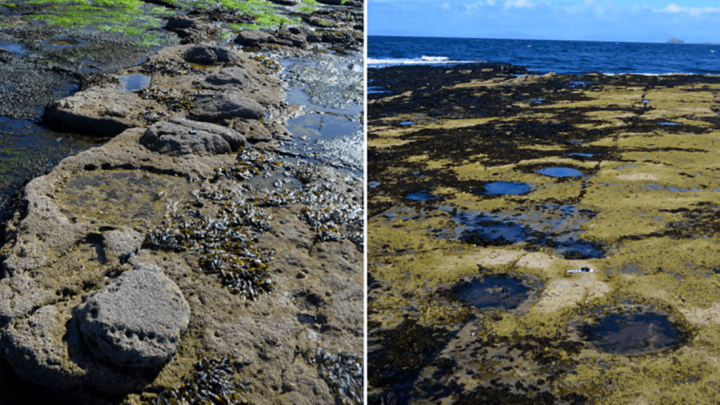Along with heather-filled moors, medieval castles, and ancient archaeological sites, Scotland’s famous Isle of Skye can now add a stupendous array of prehistoric dinosaur footprints to its lists of must-sees. Researchers recently discovered the biggest site of its kind ever found in Scotland, NPR reports.
In the Scottish Journal of Geology, researcher Stephen Brusatte and his colleagues explain that 170 million years ago, long-necked dinosaurs called sauropods roamed the Isle of Skye’s northern coast. (Scotland was much warmer then and covered by shallow seas, lagoons, and large rivers.) The large animals weighed 15 to 20 tons, and their footprints left hundreds of large depressions in a rocky swath of coast near the Atlantic. The prints were discovered by Brusatte and a colleague, who were fossil hunting and soon realized that hundreds of sunken pits zig-zagging across the rocks were the tracks of an ambling prehistoric beast. Scientific American writes that the two returned when the tide was low, and measured the footprints—one of which was 2.3 feet wide.
The location where the prints were found was apparently once a lagoon, suggesting that sauropods weren’t averse to hanging out in the water. According to National Geographic, this finding challenges the idea that sauropods stuck to forests. Furthermore, as the Guardian reports, the footprints are a rare find from the Middle Jurassic, a period that hasn’t yielded researchers a lot of fossils. By walking in the sauropods’ literal footprints, scientists have already learned valuable information about the ancient creatures—and more about the Isle of Skye’s prehistoric past.
